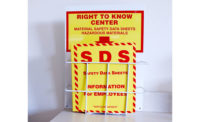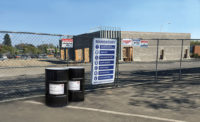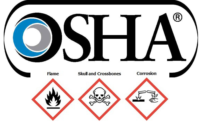It’s common knowledge that Hazard Communication (HazCom) always makes OSHA’s Top 10 list of violations. What may not be as commonly known is the breakdown of violations within HazCom. What’s the most-cited issue? In fiscal year 2022, “lack of a written program” topped the list, with 783 citations issued by OSHA.
The written program is a record of what a company has done to comply with the provisions of 1910.1200. Employers who have hazardous chemicals in the workplace must prepare and implement a written HazCom program. The standard defines hazardous chemical at 1910.1200(c).
Exceptions to the rule
Laboratories and work operations where employees only handle chemicals in sealed containers, such as warehouses, are not required to have a written program. However, they do have other responsibilities under the standard at 1910.1200(b)(3) and (b)(4).
Breaking down the requirements
While the written HazCom program covers a lot of territory (outlined at 1910.1200(e)), it can be broken down into several key areas. It must address:
- The chemical list or inventory,
- Labels and other forms of warning,
- Safety data sheets (SDSs),
- Employee information and training,
- Hazards of non-routine tasks,
- Hazards associated with chemicals in unlabeled pipes, and
- Multi-employer workplaces.
Chemical list or inventory: Your chemical list, or inventory, must include all hazardous chemicals known to be present in the workplace, even if they’re in storage. The list must contain the product identifier, such as the product name or number, from the corresponding SDS.
The list can be maintained on paper or in electronic format and it can be compiled by work area or for the workplace as a whole. Compiling the inventory for the entire workplace may be most suitable for very small facilities, while for larger workplaces, it may be more convenient to compile lists of hazardous chemicals by work area and then assemble them together as the list for the workplace. As new chemicals are purchased, the list must be updated.
Labels: Your written program should include:
- Name or job title of the person(s) responsible for ensuring labeling of shipped containers and workplace containers;
- Description of any workplace labeling system used which is different from GHS-style labeling for shipped containers;
- Description of written alternatives to labeling of in-plant containers, if used (for example, putting the label information on batch tickets for stationary process tanks);
- Procedures to review and update label information when necessary, to ensure that labels that fall off or become unreadable are immediately replaced; and
- A copy of posters used (if any) to inform employees about 1910.1200, or where your written program information is located.
SDSs: Your written plan should document:
- Name or job title of the person responsible for obtaining/maintaining SDSs;
- Where SDSs are kept in your facility, and how employees can access them;
- The procedure for reporting a missing SDS;
- The procedure to be followed when the SDS is not received at time of first shipment;
- A list of any chemicals without SDSs and copies of request letters/emails you have sent to the manufacturer or supplier; and
- If you generate SDSs, the procedure for updating the SDS when new and significant health information is found.
Training: Include such details as:
- Name or job title of the person responsible for conducting training;
- Which employees will receive training (if you are training all employees, state this);
- The format of the training program that’s used (audiovisual, computer-based, classroom instruction, etc.). If you give any handouts to employees, include copies;
- Procedure to train new employees at the time of their initial assignment;
- Procedure to retrain all employees when a new hazard is introduced; and
- How training is documented (such as a copy of a training attendance sheet signed by employees upon completion of their training).
Non-routine tasks: There may be tasks to be performed on occasion – such as the cleaning of reactor vessels or tank cleaning – that will expose employees to different chemical hazards than they’re used to, as well as require novel control measures. Your program must address how you’ll handle these situations and make sure that employees involved have the necessary information to stay protected.
Unlabeled pipes: Work activities may be performed by employees in areas where chemicals are transferred through unlabeled pipes. Before starting work in these areas, employees must be informed about the identity and hazards of the chemicals in these pipes, as well as required precautionary measures. Your program must address how you’ll inform employees of these hazards and precautionary measures.
Multi-employer workplaces: Where there’s more than one employer operating on a site, and employees may be exposed to the chemicals used by each employer, your written program must address:
- How on-site access to SDSs will be provided to the other employer(s).
- How such employers will be informed of needed precautionary measures.
- How such employers will be informed of your workplace labeling system if it’s different from the labels specified for shipped containers at 1910.1200(f)(1).
- Employers in multi-employer worksites who do not use hazardous chemicals, but whose employees are exposed to the chemicals used by other employers, are required to have a written program and train their employees on the hazards of the chemicals in the work areas.
Is your program working?
While the HazCom standard doesn’t require you to review your written program, it’s a best practice to do so periodically to ensure it still meets the requirements of the standard and that it reflects what you’re doing in the workplace.
The written program must be available, upon request, to your employees, their designated representatives, and any OSHA officials. If OSHA inspects your workplace, the compliance officer will ask to see your written program.



